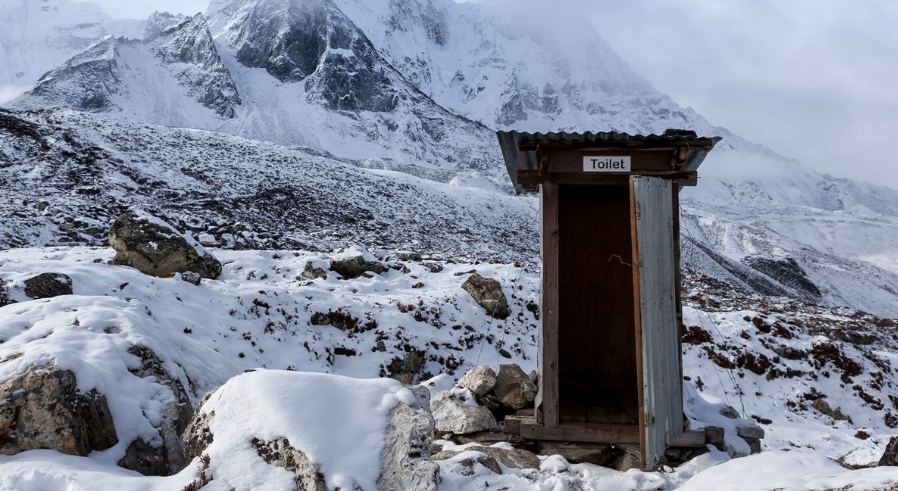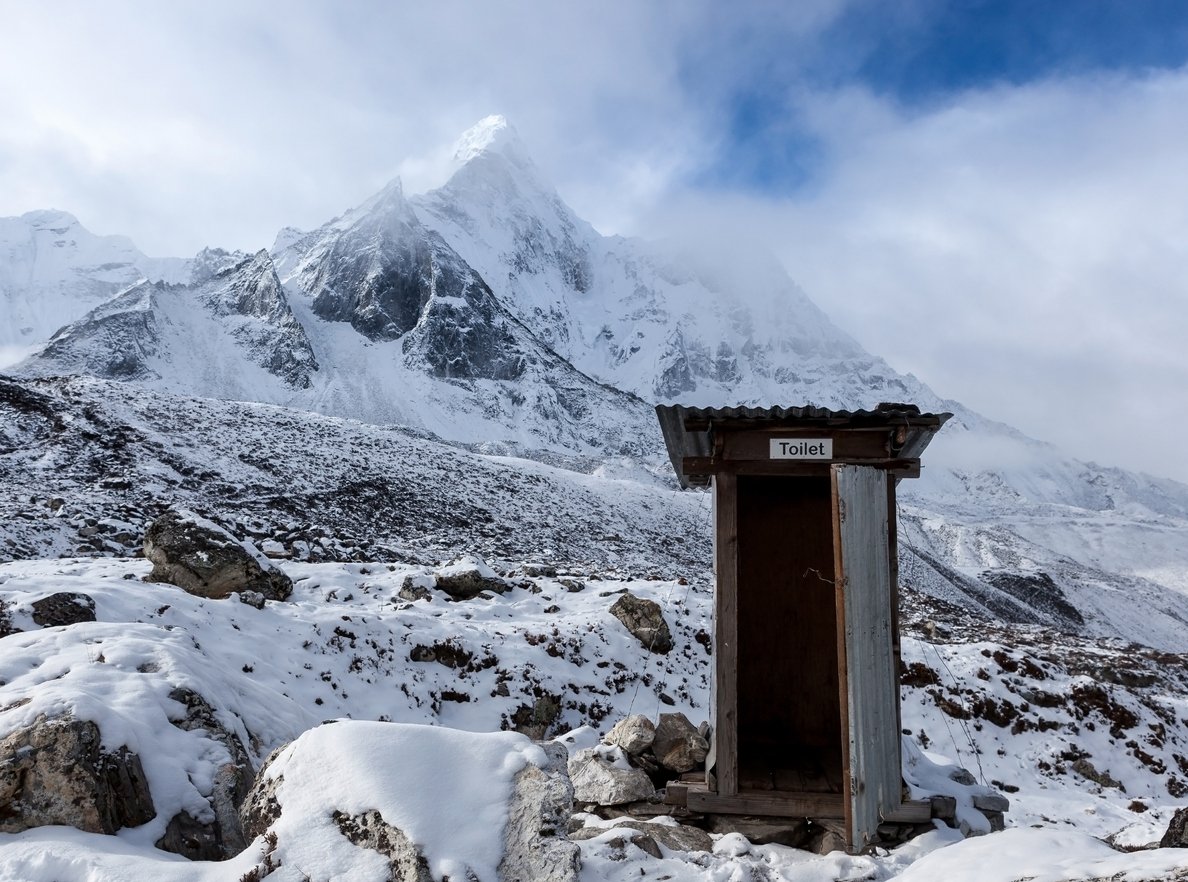
Poo. Not something that most of us want to talk about… Particularly not the kind that explodes its way into your adventure and makes your travel plans suddenly very messy. But, the truth is, if you go on enough adventures to remote enough places you’ll probably get a bout of diarrhoea. Yum. Some point, somewhere, when you’re probably least expecting it… you’ll encounter a touch of the trots.
Whilst probably not a conversation for the dinner table, the last thing you want is to get knocked sideways by a gyppy tummy halfway up a mountain. You could ignore the possibility, cross your fingers and toes, hoping for the best. You could take the “Oh it won’t happen to me” attitude. But, as they say, shit happens. We’d rather be prepared for the worst and equipped to deal with it if and when it happens.
Here, doctor and expedition leader, Jane Wilson-Howarth gives a few pointers on how best to avoid diarrhoea and what to do if you get it. Over to you, doc…
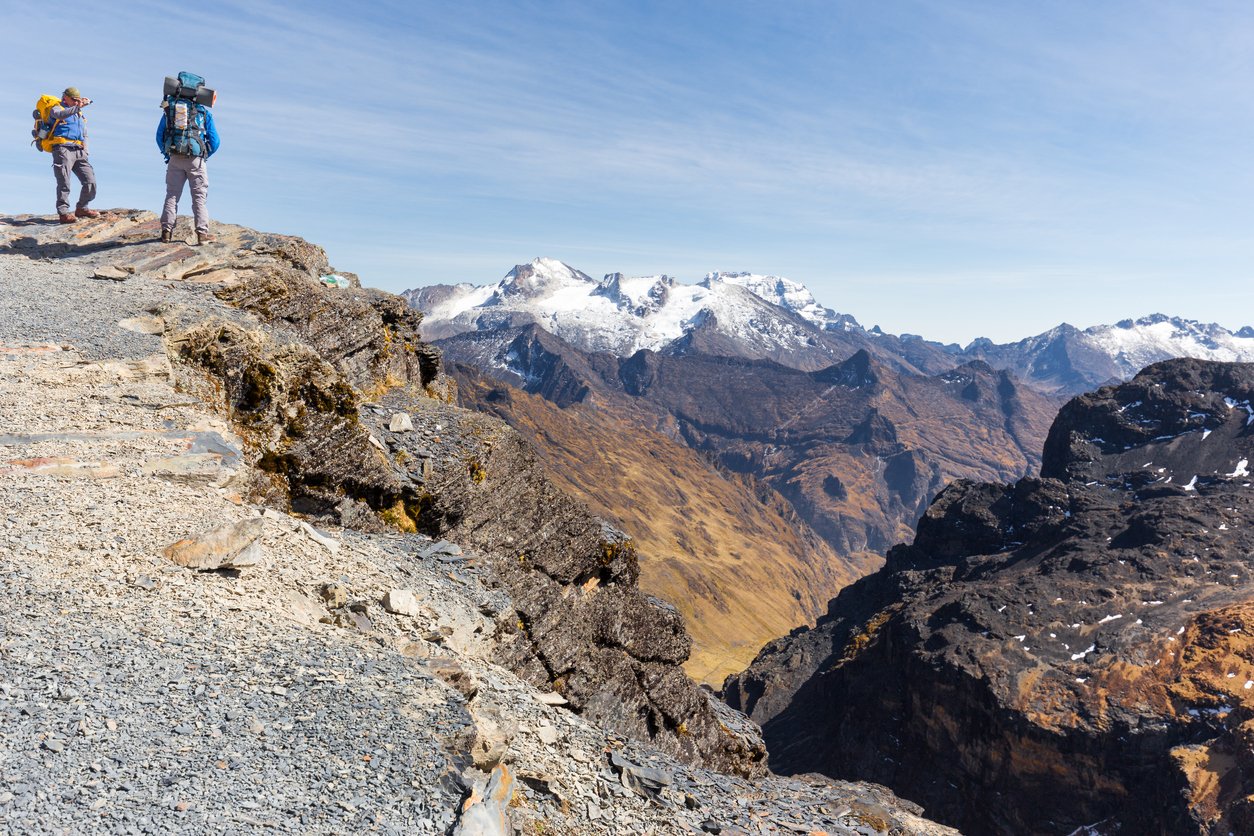
Travellers’ diarrhoea, gastroenteritis, food poisoning, stomach upset, the squits… or whatever you call it, is the most common medical problem for travellers.
In milder climates, the risk is relatively low. A summer trip to the Med, for example, might come with as much as a 20% chance of being hit, while during the hot season in the Indian subcontinent there is about a 50:50 chance of Delhi Belly. So it’s certainly worth knowing a bit about it.
The symptoms depend upon the microbe. Some gastroenteritis, with a short incubation period, provokes a prompt puke. Those bugs that penetrate further down the eight metres (25 ft) of tubing that is the adult human alimentary canal take longer to cause mischief: more diarrhoea than vomiting is the likely outcome.

I tend to regard the purging of gastroenteritis as a good thing. If your body recognises it has been invaded and repels the pathogen through vomiting, you’ll likely feel better within hours – as long as you drink lots and (when the appetite returns) eat only bland carbs.
Similarly, in most travellers’ diarrhoea, the brisk outpouring may be torrential at first (and along with it cramps) but as the flow slows, the right rehab will have you feeling better in 24-36 hours. Meanwhile, during this awful emptying, you will be thankful that your hiking muscles are toned enough to maintain that squat over the long-drop.
Yes, I know that no-one wants even 24 hours out of their trip, but often taking medicines in simple gastroenteritis does little to speed recovery and sometimes even prolongs the grief.
So here’s what you need to know:
Tip 1: Follow the Mantra: Peel it, Boil it, Cook it or Forget it.
Raw food, especially salad stuffs with little crevices (like lettuce) are high risk in destinations with poor standards of environmental hygiene. Eat washed fruits with intact skin that you remove yourself. Choose hot, freshly cooked items. Shun ice-cream. Drink from safe water sources if you can, but know that water isn’t usually what makes travellers sick.

Tip 2: Always wash your hands with soap
Always wash your hands with soap and plenty of water after going to the toilet and before eating. I recommend travelling with a bar of soap in a soapbox. Soap and water kills more microbes than alcohol hand rub or wipes, which I never use.
Tip 3: Avoid ice-cold or very hot drinks during the worst of it
The human body is a marvellous and complex thing. Better still, it mostly functions well without you paying it much attention! But travellers need to understand the gastro-colic reflex.
This is the same phenomenon that promotes your morning trip to the loo after your first tea or coffee of the day, or after breakfast. It clears the gut in preparation for what it will receive during your waking hours. The problem is that this reflex is hugely enhanced when you have gastroenteritis. A drink or food will stimulate a reflex bowel action perhaps 10 or 20 minutes later.

The reflex is especially brisk if the drinks are ice-cold or very hot, or if the meal is particularly large. This means that if your tum is feeling a bit dodgy and you gulp down a cold cola before boarding a bus or worse – a light aircraft without a toilet – you’ll be buttock-clenching and praying, or tapping the bus driver on the shoulder and requesting a stop.
I encountered one poor tourist who was caught short like this and managed to persuade the pilot to touch down on a grassy airstrip in Nepal, where the poor man was then seen to sprint for the bushes. He returned looking much relieved and we continued our flight to the intended destination.
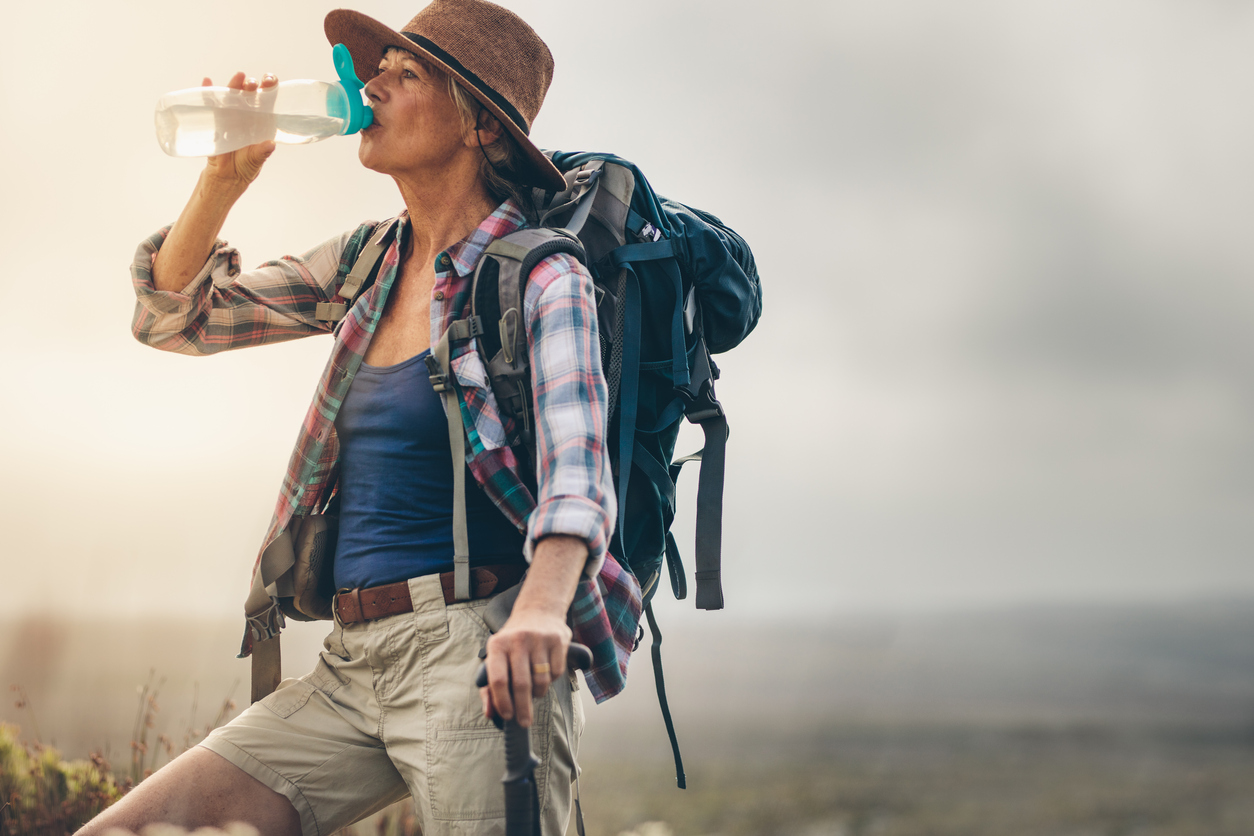
Tip 4: Rehydrate with sugary (or slightly salty) drinks
The dehydration that can so easily come with gastroenteritis makes you feel lethargic, and sometimes head-achey. Water alone isn’t absorbed into the body as efficiently as sugary drinks (avoid diet versions), drinks containing a pinch of salt, thin soups or oral rehydration salts (e.g. Dioralyte packets). Make sure you take a couple of large glasses of clear fluids each time you open your bowels to replace what is pouring out of you.
Tip 5: Do a bit of stool-gazing
Have a look at the stool. If it contains blood or slime (it looks like snot) you probably need antibiotic treatment. You should, if possible, see a local medic or take the relevant antibiotic from your medical kit. Plus lots of fluids to ensure good hydration.
Personally, I’m not a fan of ‘blocking’ medicines like loperamide or Imodium as these slow the purging and I reckon make you feel sluggish for longer. They are not recommended in bloody diarrhoea and dysentery.
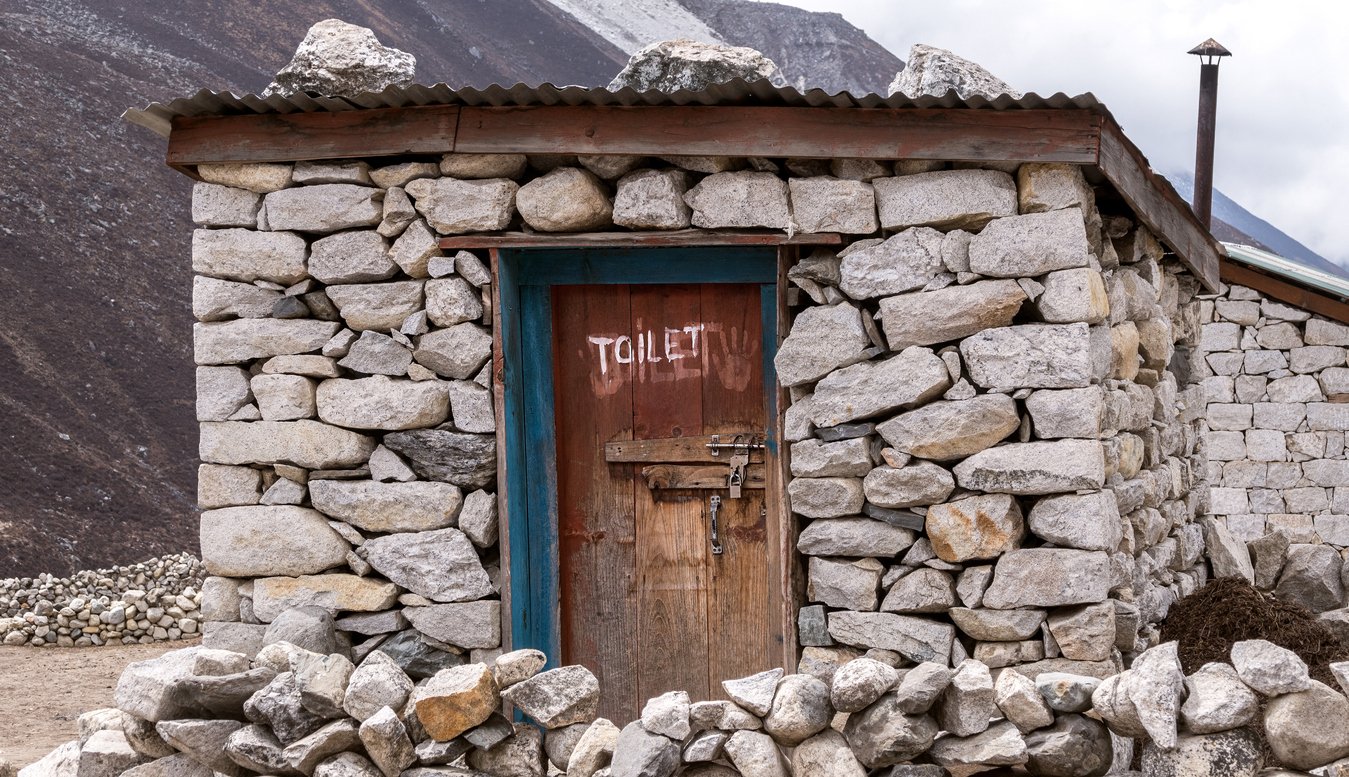
Tip 6: Don’t lock yourself in the loo
If you have access to a lockable loo be aware that lots of people faint in toilets when they have severe diarrhoea (and sometimes crack their heads on the rim). Dehydration drops your blood pressure, so getting up from bed to answer nature’s call may not allow time for enough blood to get to the brain to keep you conscious.

If you are feeling bad, let others know. But most importantly when at risk of fainting, test how dizzy you are by getting up slowly: sit up; swing your legs out and put your feet on the floor; wait – if you can – for the room to stop spinning before standing and walking sedately to the toilet.
Jane Wilson-Howarth is a medical doctor who has led expeditions to the Andes, Himalayas and Madagascar. She's done a dozen treks in Nepal with children from the age of three months and has written nine books including How to Shit Around the World. She currently lives in Nepal.

